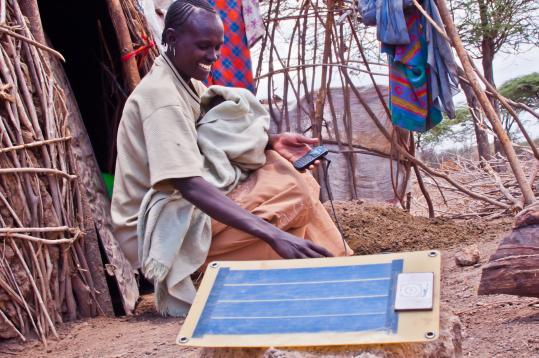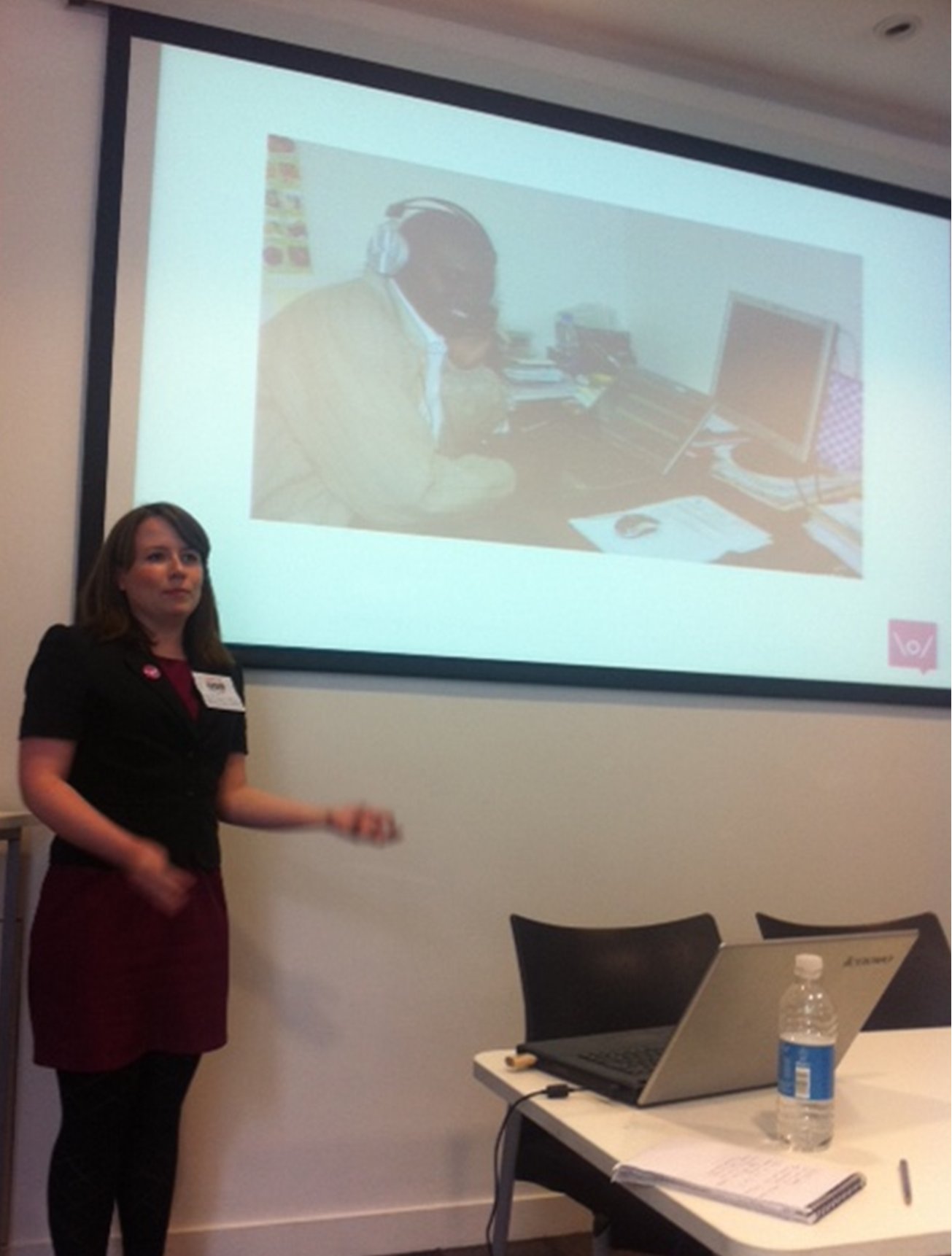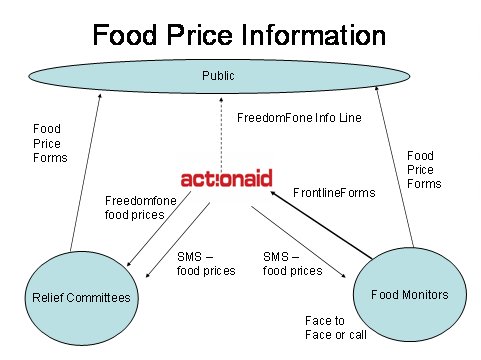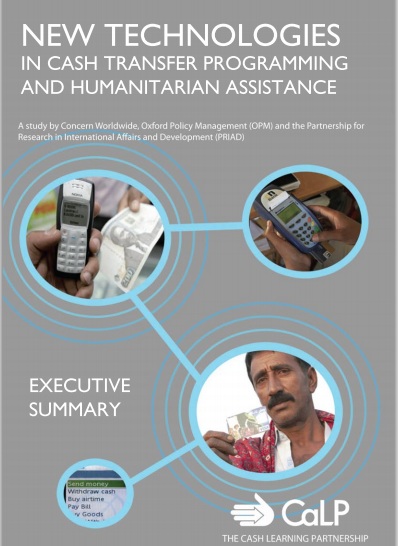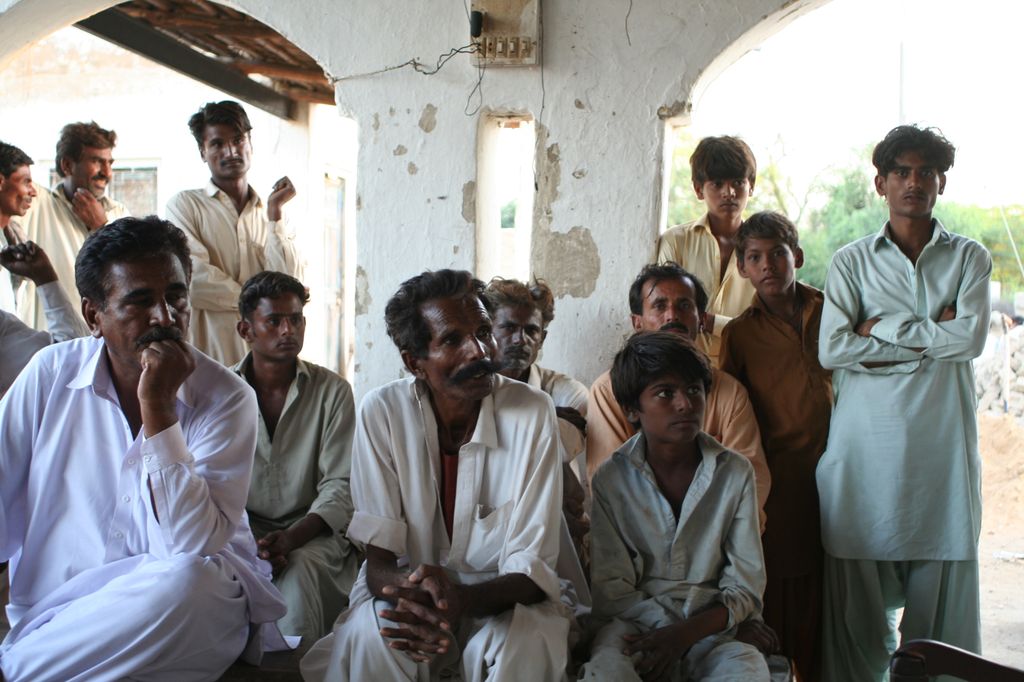Saving lives and alleviating suffering in refugee camps is the hallmark of caregivers across the world. A cogent humanitarian response plan ensures those communities affected by the crisis to access services and resources provided safely and with dignity. A meaningful two-way communication system is an effective and beneficial way to achieve this. FrontlineSMS partnered with the Danish Refugee Council to provide essential Camp Coordination and Camp Management (CCCM) services in Malakal and Melut counties, South Sudan.
Messaging Museum: How On the Inside is Connecting Gallery Goers to Artists Using SMS
Messaging is by far the best channel for attendees to engage on-site, and it also provides a natural connection point between art lovers and the artists. Craft Contemporary's On the Inside exhibit is not only supporting powerful new art, it is finding new and innovative ways to connect its audience to artists and the show’s cause.
How Frontline gave a voice to marginalized communities in Colombia
Understanding Mobile Access From an Ecosystem Perspective
The expansion of mobile access has been a common refrain in international development for years now. It plays an important role in supporting human development, from economic and educational opportunities to political freedoms and human rights. Increased access to mobiles has been linked to positive social outcomes in dozens of countries.
Accessibility and Accountability: Social Impact Lab's Governance Project Plans
From Colombia to Ghana to Canada, communicating with members of parliament, tracking city council spending, and advocating for environmental oversight of extractive industries are among a wide range of governance activities that have become possible for anyone with access to an internet connection, a computer, or a smartphone. That’s a lot of people, but not nearly enough.
FrontlineSMS in the Philippines and the Typhoon Haiyan (Yolanda) response
FIRST Response Radio - Life Saving Information in Disaster
A big thank you to Mike Adams, the INTL Coordinator, for sharing his experiences with FrontlineSMS and further schooling us on how radio can facilitate in saving lives! In times of disaster radio not only saves lives, it can also bring hope and critical information to the affected community. When the 2004 tsunami struck Banda Aceh, Indonesia, all the radio and TV stations went off air. Similarly, during the 2005 South Asian earthquake, the only radio station near the epicentre lost its tower and went off air. In times like these, people are in desperate need of news and information on how to get to safety and how to survive. However, the unfortunate trend seen recently is that when radio is so important, many times it goes off the air and does not come back until well after the emergency is over.
Health Information for Remote & Rural Eastern Indonesia
The landscape of NTT is largely rugged and infertile with a short and intense wet season. In this environment subsistence farming, the predominant livelihood, is marginal with many communities experiencing periods of hunger through the dry season. The provision of services to the rural population is difficult because there the few roads are generally of poor quality and frequently impassible in the wet season due to flooding or landslides. For many accessing health services requires walking long distances and the use of public transport where available. It is not uncommon for people in need of emergency care to be carried by a group of villagers to a point where road transport is available.
Keeping it Simple with SMS
UN Special Envoy to the Western Sahara Christopher Ross landed in Morocco last Wednesday. While the international community anxiously waits to see where his next round of negotiations go, here's a peek into the lives of those affected most by the outcome - Sahrawi refugees. For once, a little hope for the future coming from the Sahara...
FrontlineSMS at 7: ActionAid in Kenya, Nepal and London
In the seventh and final post in our FrontlineSMSat7 series, our CEO Laura Walker Hudson highlights a FrontlineSMS use case that makes her happy - ActionAid's award-winning, bi-continental pilots of FrontlineSMS in Africa and Europe.
Low tech adaptations for a community communications system
For the past month, I’ve been in Sudan working to set up the information flows and tech that will support SUDIA’s Community Communications System. From the tech and information management perspective, SUDIA’s System is interesting because it adapts to a low tech environment by integrating SMS and radio, and processing information largely offline. The System collects and disseminates information useful to communities that live along the migratory routes in Blue Nile State. It focuses on information that communities themselves can use to make their livelihoods more sustainable and more peaceful. In other words, the System is not aimed at organizations (Government or non-Government) that can use information to provide services or design interventions. Rather, it is aimed at communities helping themselves, and provides information that is useful to community leaders in organizing local community responses to livelihood challenges.
Information provides real benefits for drought-hit communities and ActionAid alike
Late last week, ActionAid won a Technology4Good Innovation Award for their work using FrontlineSMS to communicate with staff and communities in Isiolo, Kenya, during the response to the recent drought in the Horn of Africa. Together with our partners, Infoasaid, who supported the deployment, we are very proud to be associated with their ground-breaking and crucial work. Bravo ActionAid!
Below is an extract from a blog post describing the programme and the impact FrontlineSMS has had - you can read the full post here.
When disasters strike, people need information as much as they need shelter, water and safety. By providing, the right information, at the right time, from the right source, lives and livelihoods can be saved.
At the same time, if people have access to useful information during disasters they can make their own choices and decisions, and become more active participants in the process of their own recovery and claiming their rights. They can feed back, complain, voice their opinions and, in doing so, hold agencies like ActionAid - and other bodies like local and national government - to account.
Since May 2011, ActionAid has been partnering with a consortium called infoasaid to mainstream communications with disaster-affected communities in our emergency preparedness and response.
As part of the partnership, ActionAid is implementing a pilot project in Isiolo, Kenya, where ActionAid (in collaboration with the World Food Programme) provides vital food rations to over 80,000 people every month. Distribution of the supplies is handled by community members themselves through self-organised “Relief Committees”, and overseen by Food Monitors employed by ActionAid.
Broadly, the project aims to help combat food insecurity amongst communities affected by last year’s drought. It uses innovative technology – FrontlineSMS and Freedom Fone – to transmit information simultaneously to multiple recipients from a laptop computer, and to provide a channel for communities to feed back to ActionAid staff.
The project provided basic mobile phone and solar chargers to 250 Relief Committee members, and 30 Jave-enabled mobile phones to ActionAid Food Monitors, regional office staff and others including warehouse owners and food truck drivers.
A recent review of the project found that it had brought benefits for both drought-affected communities and ActionAid, by;
Boosting household income
Edward, Relief Committee Secretary: “A man asked ‘how is the livestock price in Isiolo?’ I told him it is lower, he immediately called people in Nanyuki so that they could go to buy [in Isiolo] and sell in other towns. He bought so he could sell at higher price.”
Improving relations between communities and ActionAid
Fatumah, ActionAid Food Monitor: “We used to argue. The community wanted to know why I had not told them about the distribution dates. Now they have time to prepare. Within 30 minutes we are done. Before we had to ask neighbouring villages to help with off-loading - that could take 2-3 hours.”
Increasing the speed and efficiency of food distribution
Community member in Oldonyiro: "There is a big change now. Long before, food used to stay overnight because there was no communication. Now we get information immediately even when the trucks are still in Isiolo. We are aware that food is arriving tomorrow, and we go ready for distribution."
Food Monitors also report that the use of Frontline SMS has reduced the need for frequent travel to rural communities for face-to-face meetings – in one case from 24 per month to just 12 – saving time and money.
Enabling community members to better plan their time
Halima, community member: “In the past we saw the [food] trucks arriving and we might have gone to attend to other works. Now, we get [information] one or two days before, we can put off our jobs and come to collect food.”
Providing information on when food distributions will arrive means children no longer have to leave school to tell parents the trucks are on the way, as was the case previously.
Enabling communities to link with the outside world
Salesa, community member: “When one [child] was bitten by the snake we used the phone to call the vehicle to help take them to hospital.”
Improving the speed and efficiency of data collection
Thomas, Food Monitor: “The Frontline SMS forms are very easy to fill. They do not consume even 10 minutes. The information goes to the hub and…it is secure. Before, I gave the information on paper which can disappear.”
Context is King: Knowledge Sharing on Communications Tools at BBC Media Action
 By Amy O’Donnell, FrontlineSMS:Radio Manager
By Amy O’Donnell, FrontlineSMS:Radio Manager
Recently my colleague Flo and I visited BBC Media Action for a Knowledge Sharing session which focused on the use of innovative mobile technology to enable effective communication for social change. BBC Media Action (previously known as the World Service Trust) "uses media and communication to provide access to information and create platforms to enable some of the poorest people in the world to take part in community life. With a focus on programming that directly engages people in debate and discussion thereby encouraging communication across political, ethnic, religious and other divides in society." We felt lucky to be one of the last visitors to their longstanding home in the iconic Bush House, London as the BBC is relocating from there after 70 years.
Often when people first hear about FrontlineSMS, it’s not just the software which inspires them, but the valuable lessons we learn from how the tool is being used. BBC Media Action works to directly engage people in debate and discussion through programming and this workshop explored the potential of SMS to open up participation.
To broaden participation, combine accessible communications channels
We explored how a radio station in Uganda is using FrontlineSMS to gather incoming audience feedback via SMS to put their questions to MPs while on-air; how FrontlineSMS is engaging citizen journalists in Indonesia and how the software is being used to run a news service for women in Sri Lanka. Introducing another popular open-source platform, we explained how the Ushahidi mapping tool was used in conjunction with FrontlineSMS for election monitoring by the Reclaim Naija project in Nigeria last year to illustrate reports in relation to their location. Many of these programs use SMS in concert with other platforms, whether radio, TV or the Internet - an important element of building a truly accessible, system that works for its unique context.
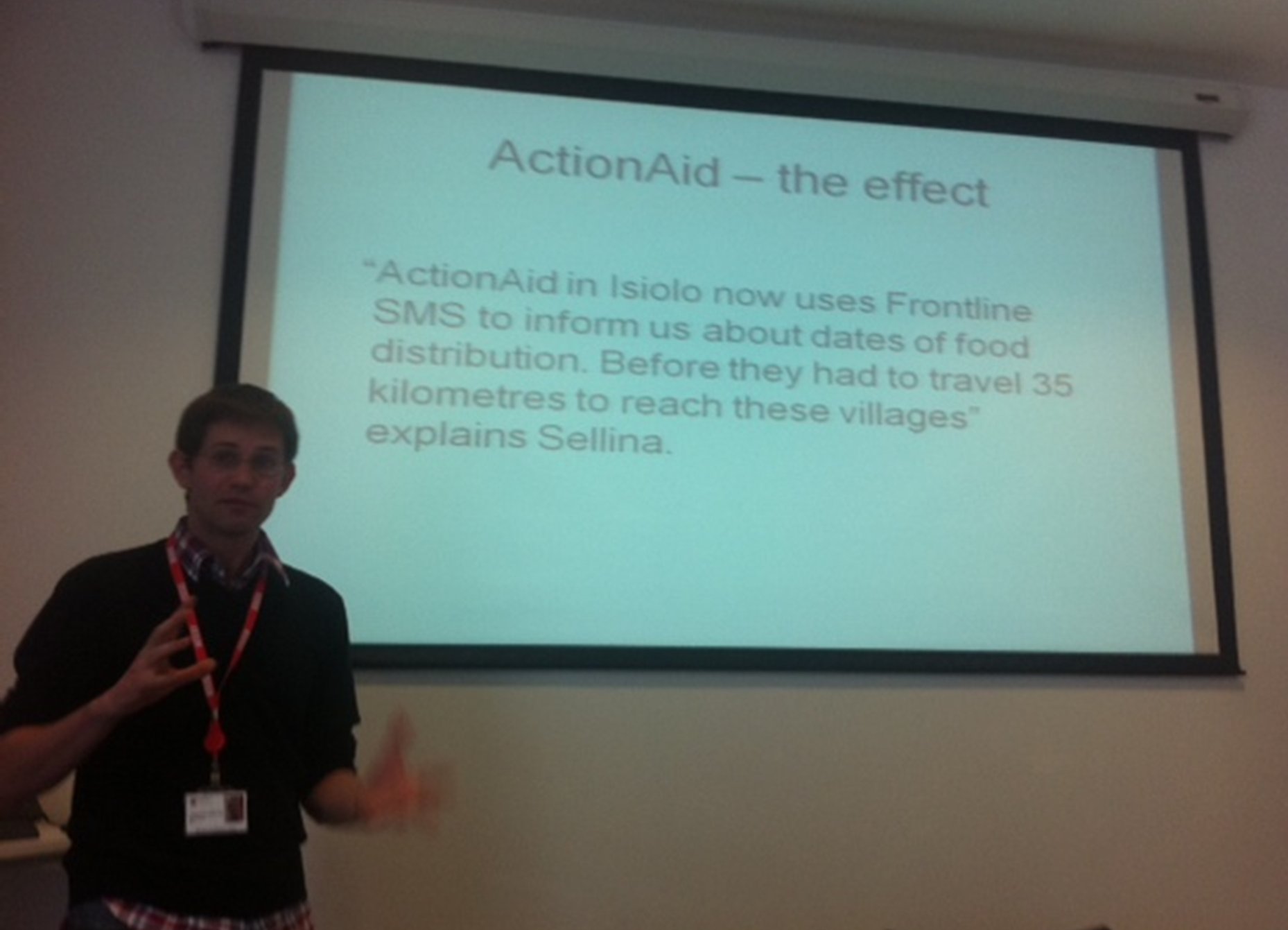
BBC Media Action’s own Jonathan Robertshaw shared his experience of using FrontlineSMS as a practitioner. He explained BBC Media Action’s role in a project run by ActionAid and infoasaid which which set up a food distribution alert and food price information system in Kenya in the aftermath of the 2011 drought. The project successfully took a multi-platform approach to improving communication between relief committees, food monitors and the public. The set-up gave people options, including voice (using an interactive voice-based software called FreedomFone); detailed SMS-based data collection (using FrontlineForms, FrontlineSMS’ data collection tool); and text message (using FrontlineSMS’s core platform).
Technology is 10% of the solution
As the discussion with different Media Action project leaders delved into program specifics, we explored how technology often only represents a small proportion of overall project design. Looking at potential Media Action projects - including participatory audio dramas and humanitarian radio - reinforced how important it is not to lose sight of behavioral and cultural factors as well as critical delivery planning: outreach, messaging, integration, translation, verification and impact monitoring. One of the group asked how to anticipate the resources required to run a communication platform. Particularly when the volume of response depends on the level of interactive behavior, the group agreed there is no “one-size-fits-all” or “magic formula.” Program staff have to consider the context and stay flexible, tweaking the system to respond to the needs of their beneficiaries and staff as they develop. Resourcing this kind of responsiveness is critical and difficult, and there are costs in money and goodwill involved in introducing people to a new system, changing messages and systems too often. The group agreed that, rather than committing to services which it may be difficult to estimate demand for, organizations should manage expectations and try to test ahead of time. Trying out communications in small trials or pilots can help scope people’s reactions.
The strongest message we took away from the session was practitioners’ motivation to learn about the different tools available in the communications toolkit. Often the design of a communication system is not about one tool, but the right tool or right combination of tools which suit the context. FrontlineSMS needs limited support and people are implementing projects all over the world using the software and tools readily available to them without requiring our team’s direct involvement. We're proud of how much that makes it a really sustainable piece of software for organizations working in the last mile, and a critical tool for long-term capacity-building.
Technology Meets Humanitarian Response
Over the last two years, we have worked to raise awareness of the potential of SMS, and FrontlineSMS, as a sustainable, capacity-building tool in humanitarian response. We have documented how our software is being used to manage and coordinate aid responses by a wide variety of organizations - including OCHA, Action Aid and Infoasaid, European Disaster Volunteers, Popular Engagement Policy Lab – and in a range of contexts - including Kenya, Pakistan and Haiti. We have also produced a tailored checklist on what to consider when planning use of mobile technology for humanitarian response. All of this content is representative of a more general trend; that of a growing number of humanitarian organizations keen to engage with how ICTs can help support their work.

In March 2012, we participated in two events in London which demonstrated this increasing interest. The first, a two-day Media and Tech Fair hosted by the Communicating with Disaster Affected Communities Network (CDAC), showcased technologists and implementers from all over the world, sharing with an audience of CEOs and decision-makers how their solutions and pilots have begun to change the way they engage and communicate with the people they work to help. The second day of this event featured practical workshops and scenario-based discussions, intended to help people to think through how they could put these tools and approaches into practice on the ground.
The second was an afternoon event - co-hosted by the Overseas Development Institute (ODI), Active Learning Network for Accountability and Performance in Humanitarian Action (ALNAP) and the Cash and Learning Partnership (CaLP) - launched an excellent report written by the team at Concern UK: New Technologies in Cash Transfer Programming and Humanitarian Assistance. Our Director of Operations, Laura Walker Hudson, participated in a panel discussion reflecting on the themes raised in the report, and we were pleased to have had the opportunity to have contributed to Concern’s research.
The report takes an in-depth look at the current use of new technology in humanitarian cash and voucher programming, and the broader implications this has for humanitarian practice. In addition to some positive cross-cutting themes – such as the improved accountability and cost-effectiveness which can result from successful use of technology in humanitarian work – the report also contains advice on mitigating some of the challenges that still obstruct wider implementation. The result is a thoughtful and broad-based survey of the opportunities and challenges facing humanitarian agencies in selecting and rolling out technological tools - reflections which are valuable across all sectors, not just humanitarian aid, for their honesty in assessing institutional barriers to change and innovation. We will examine some of these issues in a future post, and consider their relevance for anyone trying to mobilize information management and communications.
For now, a few broad themes recurred in both events:
- Disaster affected populations are already utilizing ICTs on the ground, and the globalized nature of news and volunteerism means that groups like the Standby Taskforce are pitching in to help manage and process data. If agencies fail to acknowledge progress made by others, they will be left behind.
- Erik Hersman, one of the founders of Ushahidi, reiterated a core value we share in his keynote summary of the first day of the CDAC event: technology is only a small part of what needs to be considered in planning discussions; the context, the program design, training and sustainability, and most importantly, listening to the people the project seeks to help, are a larger part of the effort and critical to success.
- The critical importance of cross-sectoral and inter-agency collaboration recurred again and again, at both events. To avoid duplication of effort, conflicting data standards, wasted resources and crowded information marketplaces in emergencies, key stakeholders must work together, and seek to understand others’ perspectives in a rapidly evolving area. Working in a consortium, or creating open-source tools available to everyone, could potentially speed up development of useful platforms and improved learning about what works and what doesn’t. Collaborating effectively with the private sector and with technologists could far more effectively harness additional resources and intellectual capital, and a coordinated ask of major players, such as the GSMA, is crucial - but can feel impossible to secure.
All in all, the humanitarian sector has a long way to go, particularly at head office level, but our team was left with a sense that there are a growing number of humanitarians who are taking an agile, open and open-minded approach to trialling new tools and sharing their findings with others. Yet it is at field and regional level that the real innovation is happening, away from the overlapping priorities and initiative overload that characterizes the global management hubs in New York, London and Geneva. As ICTs in humanitarian aid become more commonplace and begin to integrate more fully into the standard agency toolkit, agencies, technologists and the private sector must continue to build relationships and exchange information in order to build sustainable, coordinated, and appropriate use of technology in humanitarian response.
Following both of these events, valuable resources have been made available online:
CDAC event:
- All videos, photos, case studies and resources from the day can now be found online
- Case studies featuring FrontlineSMS use include:
- Using FrontlineSMS for a complaints and response mechanism after the Pakistan floods
- Infoasaid and Action Aid partnership and communications initiative in Kenya
- International Organization for Migration - Flood Affected Citizens Damage Compensation Program (whose use of FrontlineSMS we covered on our blog here)
ODI and CaLP event:
- New Technologies and Cash Transfer Programming in Humanitarian Assitance Report
- Videos from the panel discussion at this event, including our very own Laura Walker Hudson
Sending a Message of Accountability: SMS Helps Improve Services After Pakistan Floods
In this guest post, Alex Gilchrist explains how the Popular Engagement Policy Lab (PEPL) used SMS to communicate with affected communities during the humanitarian response to the floods in Pakistan in 2011. Using FrontlineSMS to set up a Complaints and Response Mechanism, people were able to share their experiences of accessing food and shelter. Co-authored by Syed Azhar Shah from Raabta Consultants, this post demonstrates how it is through the effective use of communications technology that people can be connected to the services they need the most. Guest Post by Alex Gilchrist, Popular Engagement Policy Lab and Syed Azhar Shah, Raabta Consultants
The 2011 monsoon flooding in Sindh, Pakistan’s southernmost province, affected an estimated 5.5 million people. The floods compounded the damage caused by flooding in 2010 and the lack of clean drinking water, food, healthcare and shelter resulted in communicable and non-communicable diseases across the province. It also caused loss of livelihoods through damage to agricultural land and death of livestock that will continue to affect the lives of the people of Sindh for years to come.
In the aftermath of the recent flooding, a large Pakistani NGO called Strengthening Participatory Organisation (SPO), which manages a network of organizations across Sindh province started a new project in Mirpur Khas district, distributing food items and shelter to those worse affected. Following an assessment process for one of its smaller projects, SPO selected a total of 475 beneficiaries across 24 villages.
A concern of SPO’s head office in Islamabad was that complaints and feedback from beneficiaries in previous projects had not been documented or dealt with effectively and they wanted to monitor the distribution process. This is when the Popular Engagement Policy Lab (PEPL) and Raabta Consultants were asked to help.
We were asked to set up a mechanism through which people could register issues they encountered during the flood relief distribution project in order to improve accountability and transparency before, during and after the distribution had taken place. PEPL develop research methodologies, specializing in innovative uses of low- and high-tech information systems, and for this project we collaborated with Raabta Consultants, who help communities in Pakistan to access the valuable social services provided by governments, NGOs, charities and the private sector. Using FrontlineSMS, we developed a system to handle SMS-based feedback from affected communities as part of their new Complaints and Response Mechanism (CRM).
Although less than half of Pakistan’s population owns a mobile handset, recent research indicates that more than 70 percent of people have regular access to a mobile phone. Amongst phone owners in the poorest 60 percent of Pakistan’s population, 51 percent of men and 33 percent of women used SMS, according to a survey by LIRNEasi in 2009. We wanted to test whether we could harness the prevalence of mobiles and the use of SMS for improved accountability.
Beneficiaries of the project were selected in virtue of being the most disadvantaged in each village: often those with disabilities; child-headed households; or female-headed households, and literacy rates among them were low. We realized it would be a challenge to design a system that would be accessible and useful across the board. To put these concerns to the test, we conducted a questionnaire involving participants of both genders on mobile phone usage. To the surprise of the project team the overwhelming response was that access to mobile phones was widespread, and if someone did not own a mobile phone then they could borrow one from a family member, friend or even village council member and even ask someone to write a message on their behalf. Through this evidence about the culture of using mobile, we gained overwhelming support for a system to base the CRM on a combination of text messages and voice calls.
The next step was to configure a system using FrontlineSMS so that people could text us requesting a call back. Sindhi is largely written in Arabic text, but not all handsets can recognize the Unicode in which it appears. So, following the conversations with villagers, the team devised a numbering system for complaints ranging from 1-0. The code was as follows: 1 = Food items, 2 = Shelter, 3 = Conflict 4 = Corruption, 5 = Issues with SPO staff, 6 = Issues with Partner Organisation staff, 7 = Issues with Village Council, 8 = Issues affecting women and children, 9 = Issues affecting those with disabilities, and 0 as a means of saying “thank you”. This numbering system allowed for automatic replies through FrontlineSMS tailored to the complaint, as well as a response time.
The numbering system was printed on cards with corresponding pictures, and the SMS and feedback system was also explained through diagrams. On the cards we included telephone numbers for verbal complaints and instructions for written complaints. Having printed out leaflets, posters and cards the teams went to every village and explained the process to beneficiaries and non-beneficiaries alike. During this process, field workers documented all beneficiary phone numbers or relatives’ and friends’ phone numbers, which were then saved in FrontlineSMS. This meant that every message received in FrontlineSMS would also have a name attached to it, and the system was set up so that every auto reply contained the name of the sender. We believe that the in-person relationship is a critical step that makes the difference in the popular uptake of a communications system.
Through the groups feature on FrontlineSMS, we created lists for village and Union Council members so that before each aid distribution process SPO could send messages alerting the beneficiaries about its arrival, and following the distribution process we could actively solicit feedback via SMS. When a message was received, the response manager would call back, ask for more information and then follow the internal complaints procedure.
Over the three-month aid distribution project we received 725 messages, 456 of which followed the numbering system. The awareness of this system amongst partner organizations and project staff meant that they knew they were being held to account for their actions, so it ensured the quality of their work. It was especially important that the system protected the identity and data of participants in a way that could not be tampered with. Fundamentally, we learnt that giving people a direct means with which to register a complaint or feedback empowered the beneficiaries of the relief effort to have a say in the way they were treated and furthermore to be connected with organizations who could offer further support.










